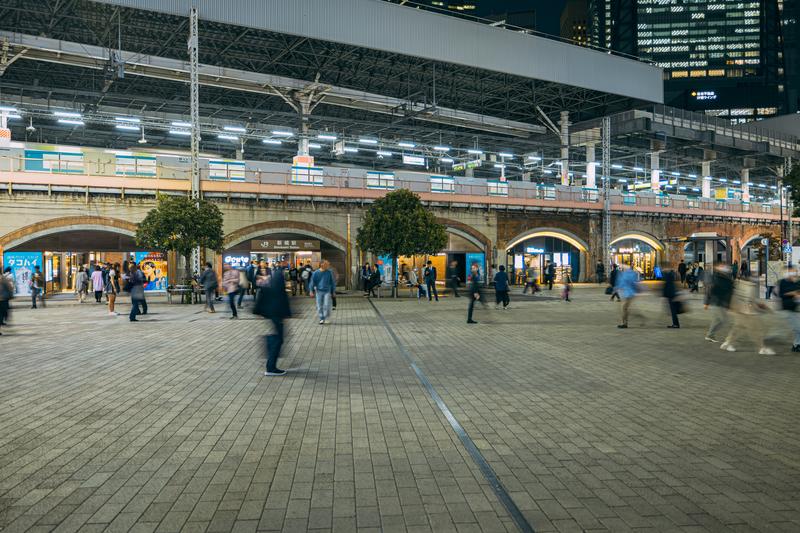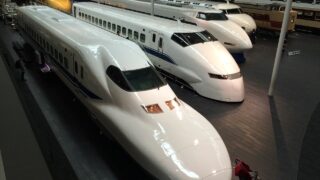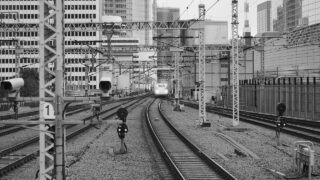How to Easily Buy Shinkansen Tickets at the Green Window in 3 Simple Steps

If it’s your first time using the Shinkansen, you might be wondering, “How do I buy a ticket? Where can I get one?”
Actually, it’s quite simple—there are several ways to purchase a Shinkansen ticket:
- At the “Midori no Madoguchi" (JR ticket office)
- At reserved seat ticket machines in the station
- Online
In this article, we’ll explain in detail how to buy a Shinkansen ticket at the “Midori no Madoguchi." If you’re not sure how to go about it, be sure to use this as a helpful guide.
How to Buy a Shinkansen Ticket at the Midori no Madoguchi (JR Ticket Office)
Using the 'Midori no Madoguchi’ might seem difficult at first, but it’s actually simple.
Step 1: Tell them your travel date and time
You can purchase Shinkansen tickets for both same-day travel and future dates. The first step is to let the staff know **when** you plan to travel.
Also, to board the Shinkansen, you’ll need **two types of tickets**: a base fare ticket (jōshaken) and a limited express ticket (tokkyūken). Make sure to purchase both in advance.
| Base Fare Ticket | This ticket covers the distance traveled, just like regular JR lines. The fare increases depending on how far you go. |
| Limited Express Ticket (All Shinkansen trains are classified as limited express) |
Non-reserved seat ticket — you can sit anywhere in the non-reserved cars if a seat is available. |
| Reserved seat ticket — lets you sit in a specific seat of your choice. | |
| Green car ticket — reserved seat in the upgraded “Green Car" class. | |
| Gran Class ticket — reserved seat in the highest-grade car with premium service. |
Step 2. Tell them your departure and arrival stations
You need to clearly state which station you’ll board the Shinkansen at and which station you’ll get off at.
Please note that, unlike regular JR lines where you may pay a fare to travel within a certain range (e.g. 200 yen zone), Shinkansen tickets are based on traveling from one specific station to another predetermined station.
For tickets to or from major metropolitan areas, the fare often includes rides within designated zones using regular JR lines.
For example, if you’re traveling from Tokyo to Shin-Osaka:
| Tokyo Area | If you board at a JR station within Tokyo’s 23 wards, the fare includes the ride to Tokyo Station. |
| Osaka Area | If your destination is Shin-Osaka, you can use the same Shinkansen ticket to reach certain JR stations within Osaka City. |
So if you’re traveling to or from a major city, the fare may already include local JR line rides within a specific area. In that case, you don’t need to purchase a separate ticket for that portion.
Step 3. Choose your seat type
There are several types of seats available on the Shinkansen:
| Non-reserved Seat | If the train has non-reserved cars, you can sit in any available seat. |
| Reserved Seat | You sit in a seat that was reserved in advance. |
| Green Car | You sit in a seat that was reserved in advance. ※ A higher class than regular reserved seats. |
| Gran Class (Only on JR East Shinkansen) |
You sit in a seat that was reserved in advance. ※ A higher class than Green Car. |
| Green Private Room (To be introduced in 2026 on JR Central Shinkansen) |
You sit in a seat that was reserved in advance. ※ A higher class than Green Car. |
First, you’ll need to choose between a non-reserved seat or a reserved seat. For long-distance trips, a reserved seat is generally recommended.
Note: Some JR East Shinkansen trains—such as *Hayabusa, Hayate, Komachi, Tsubasa,* and *Kagayaki*—do not have non-reserved cars. All seats on these trains require a reservation.
Related Articles:What to Do if You Accidentally Board the Hayabusa with an Unreserved Seat Ticket
Related Articles:What to Do if You Board the Kagayaki with an Unreserved Seat Express Ticket
Also, please keep in mind that during busy seasons or if you’re boarding from a station along the route, non-reserved seats may be fully occupied. If possible, it’s safer to go with a reserved seat.
Which Shinkansen seat should you choose?
Shinkansen trains typically offer a range of seating options, including “non-reserved seats, reserved seats, and Green Cars." Some Shinkansen operated by JR East also offer a higher class called Gran Class, above the Green Car.
In terms of price alone, non-reserved seats are the cheapest. However, since non-reserved seats are not pre-booked and you can only sit if there is an available seat, it is not recommended for long-distance trips, especially if you’re boarding from an intermediate station.
For long-distance travel, it’s best to book a **reserved seat** in advance, ensuring your seat is guaranteed from the start.
Related Articles:
How to sit in a non-reserved seat on the Shinkansen and avoid the crowds
Non-reserved Seats for Short-Distance Travel
If you’re traveling a short distance, such as a 30-minute ride, a non-reserved seat on the Shinkansen might be a good option.
As the name suggests, non-reserved seats cannot be booked in advance. Similar to regular train seats, you sit in an available seat if one is free.
関連記事:Where to Sit on the Shinkansen in the Unreserved Seats? Tips to Increase Your Chances of Getting a Seat
Please note that during busy periods or peak hours, there may be no available seats even in the non-reserved section.
If You’re Feeling a Little Fancy, Try the Green Car
Shinkansen Green Cars offer a completely different seat pitch compared to airplanes, providing a much more spacious and comfortable experience.
While it does cost more, if you’re looking to travel in a little more luxury, the Green Car could be a great option.
Window Side or Aisle Side – Which is Better?
The Shinkansen typically has a 5-seat configuration.
| Window Side | Seats A and E |
| Aisle Side | Seats C and D |
If you want to enjoy the view, seats A and E are ideal. However, the downside is that if someone is sitting in the aisle seat, it can be difficult to get to the restroom. On the other hand, seats C and D, located by the aisle, make it easier to go to the restroom quickly.
Related Articles:
Best Time to Use the Restroom on the Shinkansen
Related Articles:
What Do the Restroom Indicator Lights on the Shinkansen Mean?
The Unpopular B Seat – “Actually a Hidden Gem"
The B seat on the Shinkansen is unpopular because it has people sitting on both sides, but it has a slightly wider seat width compared to other seats.
Although having people on both sides can feel a bit cramped, the slightly wider seat actually makes it a somewhat more comfortable option.
If You’re in Doubt, Go to the Green Window
At the ticket window, you can speak directly with a JR staff member, making it easier to clear up any uncertainties.
As mentioned earlier, the “Green Window" services may be reduced in the future, so it might be a good idea to get familiar with purchasing tickets through ticket machines or online now while you can.



